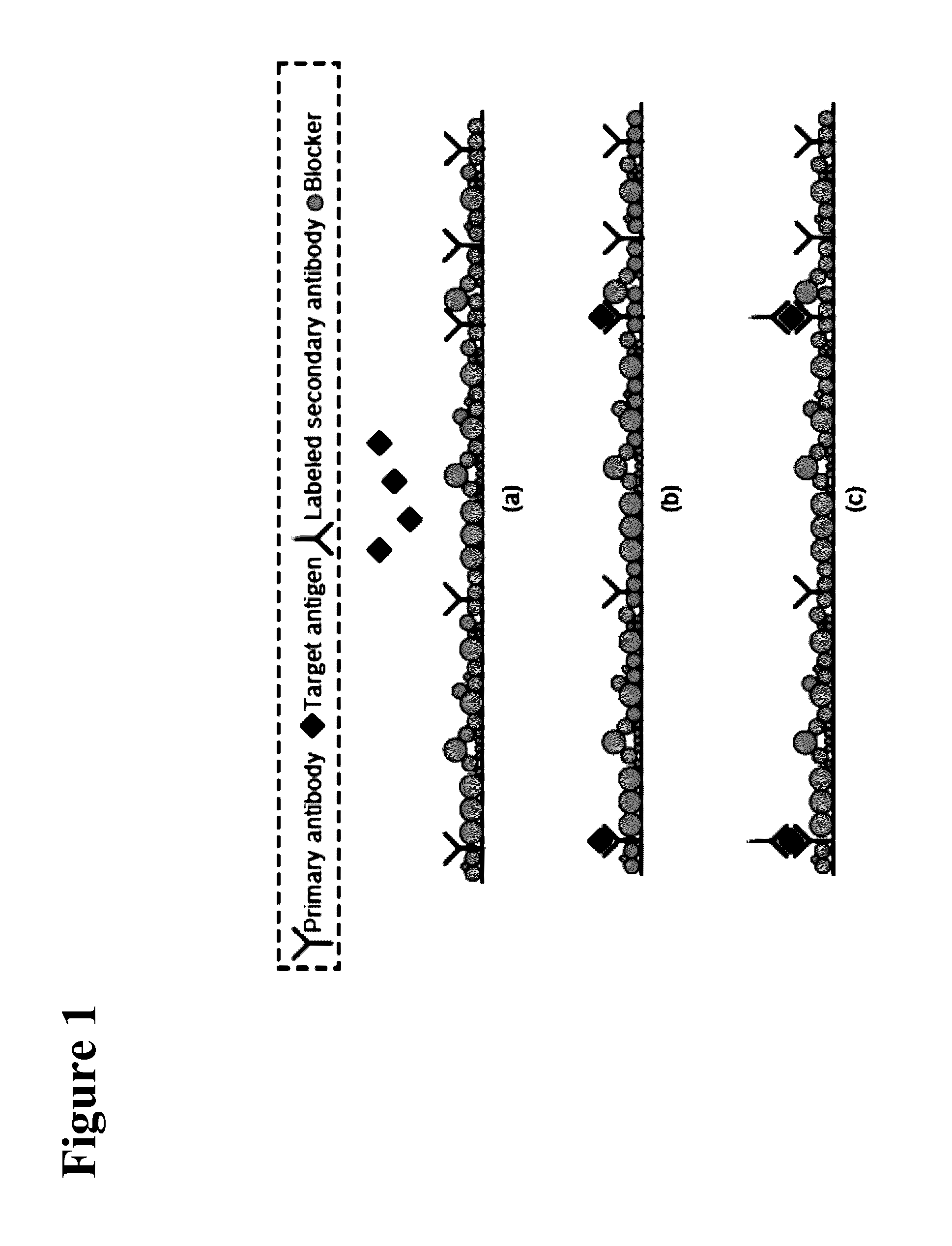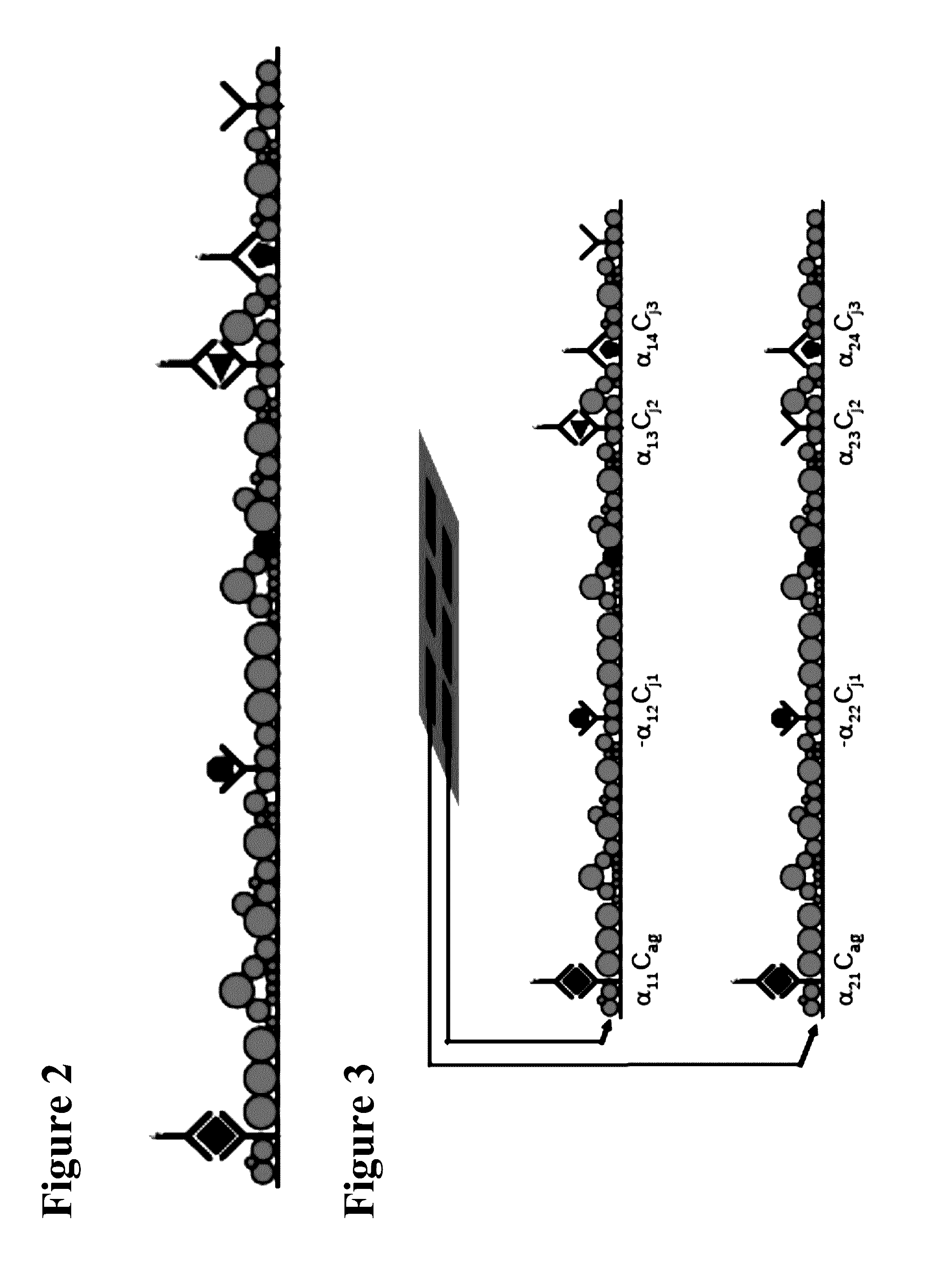Electrochemically active agents for ph modulation in biological buffers
a biological buffer and electrochemical technology, applied in the field of biosensor devices, can solve the problems of sensitivity and cross-reactivity, minimum detectable concentration, and diagnostic error rate, and achieve the sensitivity and specificity needed in such tests, and achieve the effect of reducing increasing the steric hindrance of a nucleophile binding site, and reducing the reaction between the nucleophile and the quinone derivativ
- Summary
- Abstract
- Description
- Claims
- Application Information
AI Technical Summary
Benefits of technology
Problems solved by technology
Method used
Image
Examples
example 1
Electrochemical Generation of H+ or OH− Ions at Electrode Surfaces
[0380]Electrode material used: The electrode material was indium tin oxide. This is a semiconducting electrode surface with very large potential window in an aqueous solution.
[0381]Electro-Oxidation of Species to Produce H+ Ions.
[0382]Oxidation of ascorbic acid at the electrode surfaces produced H+ ions and changed the electrode surface pH to a more acidic state:
AH2→A+2H++2e−,
where AH2 is ascorbic acid (C6H6O6) (as shown in FIG. 5). The electrode potential at which it oxidizes was less than 0.5V for Indium tin oxide material vs Ag / AgCl reference electrode (as shown in FIG. 7). This potential was less than the voltages needed for the oxygen evolution reaction in aqueous solution. Higher electrode potential (e.g >1V for ITO electrodes in just phosphate buffer) can damage the PEG layer (as shown in FIG. 8). The ascorbic acid also acted as a sacrificial species to prevent electrochemical degradation of the surface chemist...
example 2
pH Change Using Enzymatic Reactions
[0386]Enzymes such as oxidases, ureases or dehydrogenases have been known to consume or generate hydrogen during the reaction. For example:
β-d-glucose+O2→d-glucose-δ-lactone+H2O2
d-glucose-δ-lactone+H2O→d-gluconate+H+
Oxidation of glucose in the presence of glucose oxidase can produce H+ ions that are used to change the pH near the proteins of interest.
example 3
Co-Immobilization of Enzymes Along with Biomolecular Probes in a Biomolecular Interface Layer
[0387]The enzymes when co-immobilized on the surface along with proteins brings them in close proximity so the H+ produced by the enzymatic reaction will lead to a localized pH change that can affect protein binding (for example antigen-antibody binding and non-specific binding).
PUM
| Property | Measurement | Unit |
|---|---|---|
| Molar density | aaaaa | aaaaa |
| Composition | aaaaa | aaaaa |
| Polarity | aaaaa | aaaaa |
Abstract
Description
Claims
Application Information
 Login to View More
Login to View More - R&D
- Intellectual Property
- Life Sciences
- Materials
- Tech Scout
- Unparalleled Data Quality
- Higher Quality Content
- 60% Fewer Hallucinations
Browse by: Latest US Patents, China's latest patents, Technical Efficacy Thesaurus, Application Domain, Technology Topic, Popular Technical Reports.
© 2025 PatSnap. All rights reserved.Legal|Privacy policy|Modern Slavery Act Transparency Statement|Sitemap|About US| Contact US: help@patsnap.com



